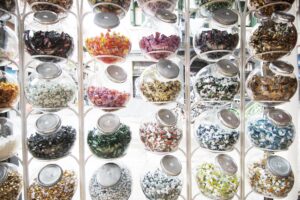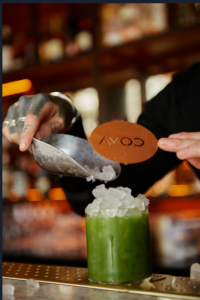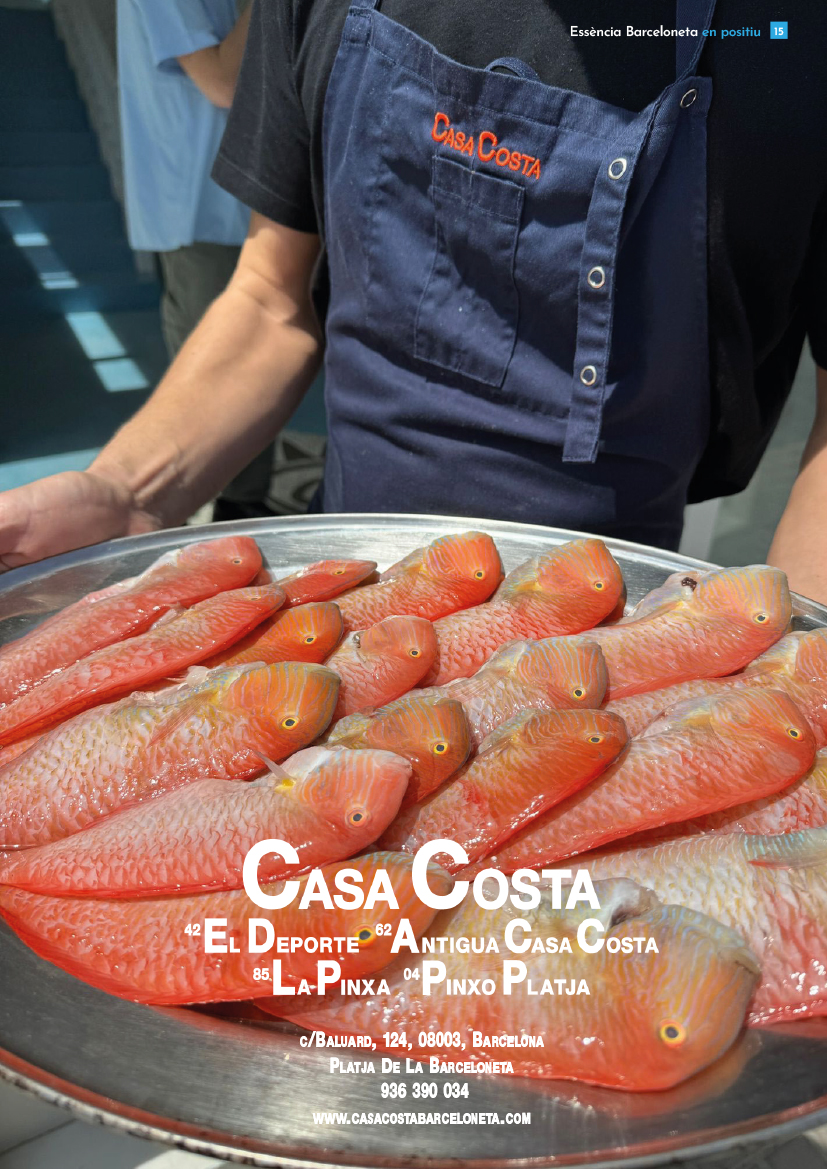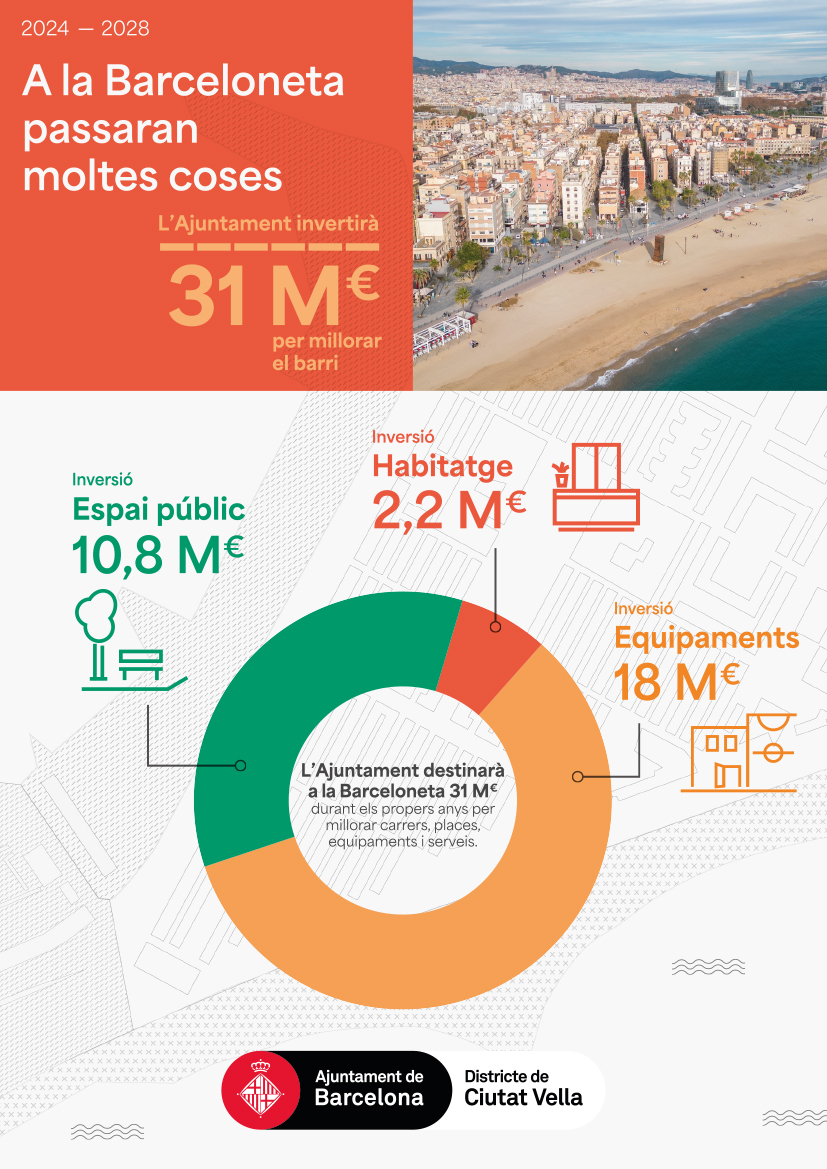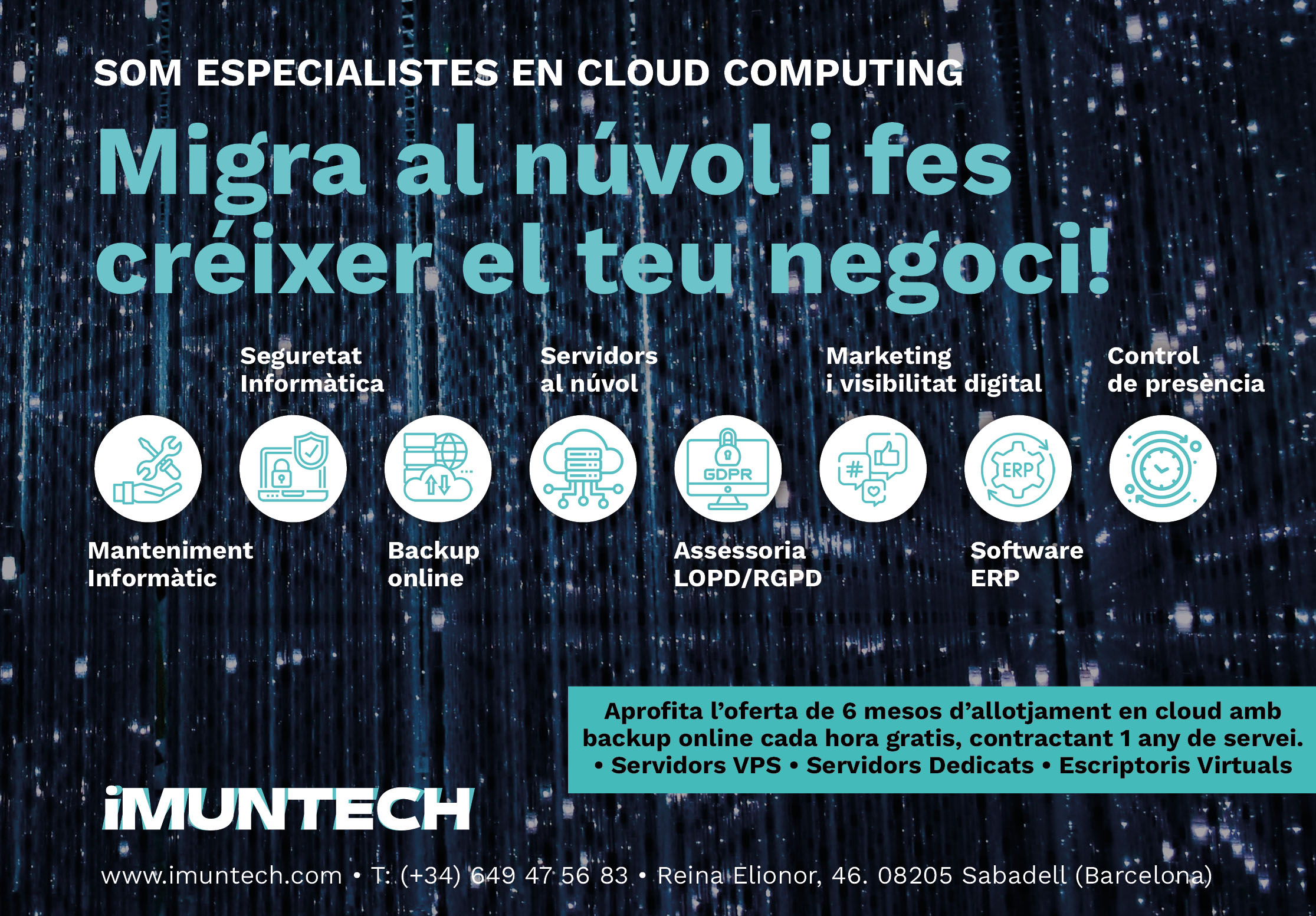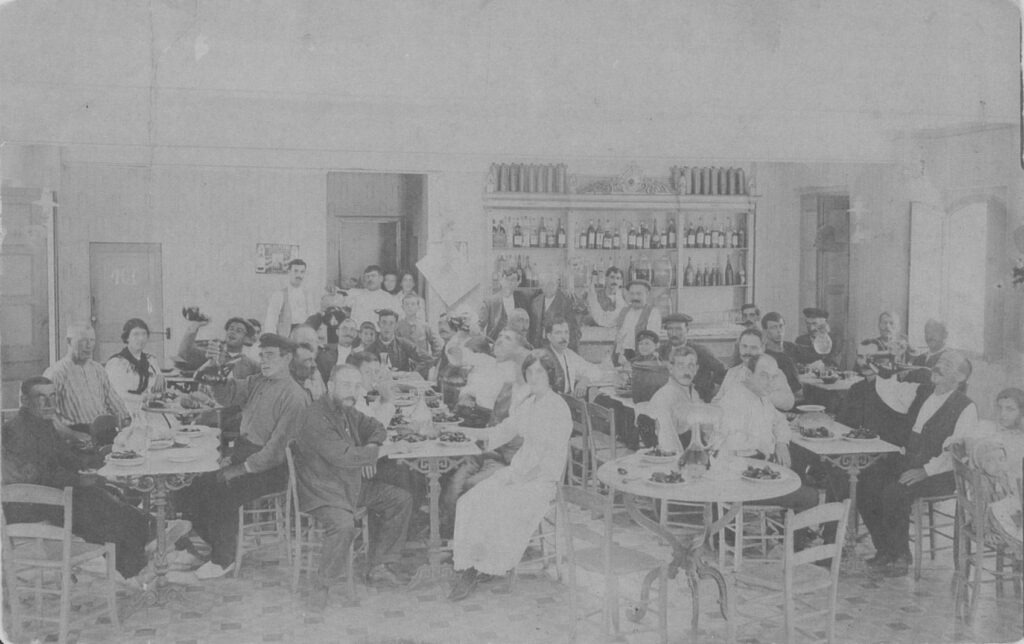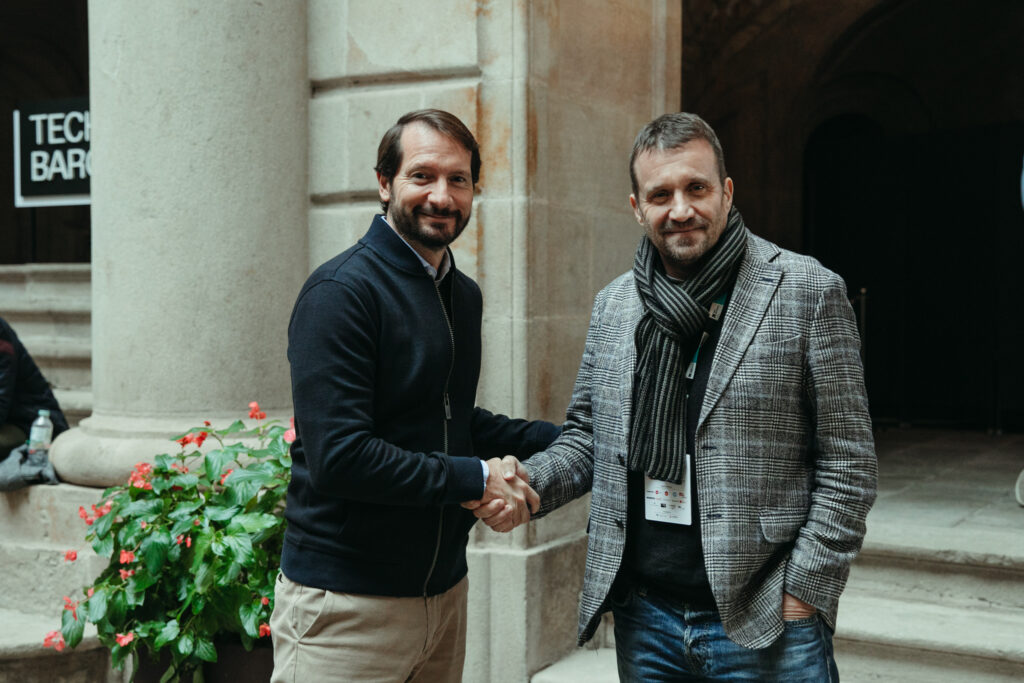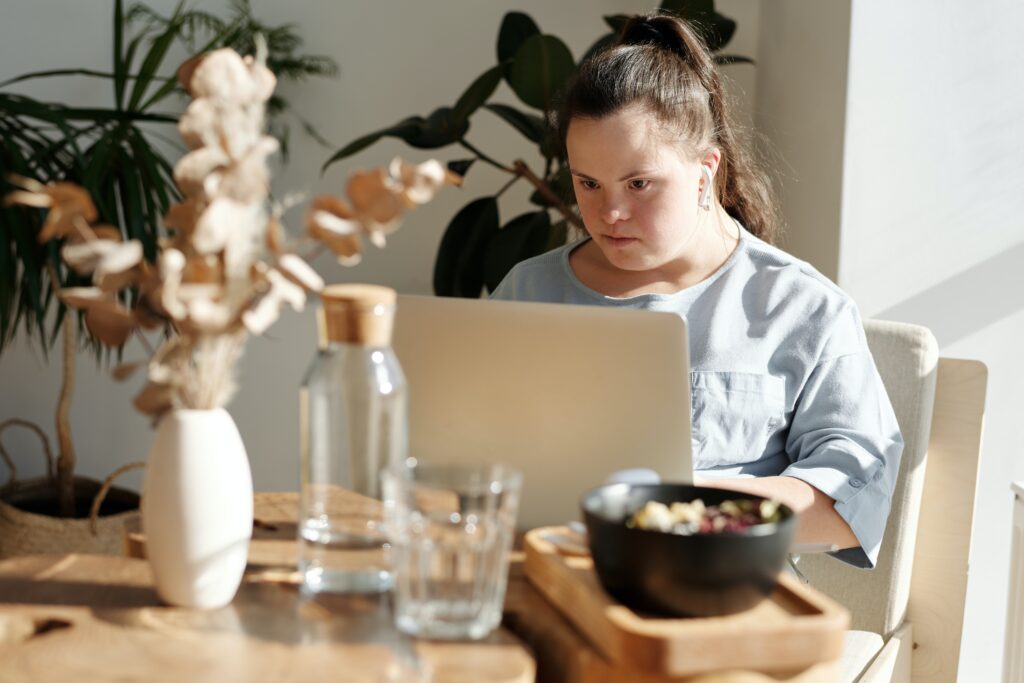Jordi Principal has been the Director of the Museum of the History of Catalonia (MHC) for a few months and that is why Essència Barceloneta wanted to know more about how he faces the challenge of directing the museum. Jordi Principal holds a PhD in Prehistory and Archaeology from the University of Barcelona and has been a postdoctoral researcher at the universities of Oxford and Pisa, as well as studying Museology and Museum Management at the University of Girona. This archaeologist, who has his origins in the Barceloneta neighbourhood, where his father’s family comes from, has taught at the universities of Barcelona, the Autonomous University of Barcelona and the University of the Basque Country. He has also participated in various international research projects in France, Italy and Montenegro. From 2013 until his appointment as director of the MHC, he was in charge of the Greek and Roman collections at the Archaeology Museum of Catalonia (MAC).
We have one of the main museums in Catalonia in the neighbourhood.
The Museum was created in 1996 with a fundamental mission: to tell the history of Catalonia, of our country. And yes, it is in La Barceloneta. What better location than in a neighbourhood with such a unique history.
What will I see at the Museum?
Our entire history, from prehistoric times to the present day, in the Museum’s permanent exhibition.
Right up to the present day?
It is an exhibition that, despite the occasional reforms that have been made, still maintains to a large extent the narrative of 1996. This means that it still carries with it certain approaches that were current and important at the time, but which are now perceived differently. I’m talking about all kinds of approaches and, of course, social and political ones.
It is a difficult task.
We want to put it right. Various reforms have already been proposed. Two years ago in the 18th and 19th century space, applying much more up-to-date criteria and narrative. Now we are considering the remodelling of the 20th century space.
With the 20th century, the demands will be greater. Much of it we have experienced first-hand.
Many different cultural and social realities have emerged in Catalonia. Many of them already existed and now they have become visible and have been strongly demanded. Our society has begun to concern itself with issues that were not so openly taken into account: the gender perspective, sustainability, climate change… All of this, we must explain in the Museum.
Do today’s issues have a historical background?
We must bear in mind that these problems are not only current, but they are also historical. Many of today’s problems can be found again if we look at the past. For example, environmental problems. Around 1500 BC, the overexploitation that the El Argar Culture imposed on its weak ecosystem produced a desertification process in some areas of the southeast of the Iberian Peninsula (in areas of Albacete, Murcia and Almería), which now, almost 3,500 years later, is still perceptible. And it was due to the action of human beings! And this depletion of resources caused the disappearance of this civilisation. Knowing the history and these problems, which are not new, studying their causes and consequences, perhaps we should find solutions, or at least be able to foresee them.
There is a French school of historical thought from the 20th century (the Escola dels Annals) that proposed to study history, the past from the present and the present from the past. Because the perspective of history is linked to the events we are living through today.
But history can be so interpretable!
It is not an exact science, like mathematics can be. An event can be, or is, multifaceted. Depending on the person trying to understand or explain it, this event is perceived differently. History is a tremendously interpretative science.
The Museum of a socially and culturally rich Catalonia.
We are the Museum of the History of Catalonia and Catalonia is made up of all of us. There is a great variety of people, beliefs and thought. All these people should be able to see themselves represented when they come. If they feel identified, they will come more and they will learn and enjoy a history that is their own.
Do tourists come to the Museum?
There is cultural tourism. We are detecting that there is a growing interest on the part of the international public in knowing what Catalonia is. This has its origins in all the political events of recent years. This noise has generated a stir everywhere, and many tourists come to seek answers about all this. The Museum can become a point of reference for answering these questions.
Enjoying is having fun… is participating?
We always try to ensure that people have a good time learning. The Museum has a very important informative aspect when it comes to telling the story, also based on experimentation. You can get on a medieval horse or handle a warrior’s armour to test its weight. You can touch history!
You said that it is considered a social museum. What does this mean?
Yes, I think we must get people to come to our Museum to express all these concerns, from a cultural, social and even protesting point of view. That must find a space for this in the Museum.
Don’t just be a passive visitor.
You can just be a spectator. But you can also participate and say how you would like this Museum to be. We have our ideas, but we want yours too. Because other opinions and points of view enrich us.
What will you do to get this feedback?
We should open up some activities for people to explain, give their opinions and participate. For example, through entities we will ask for proposals that, if feasible, can go ahead.
The youngest children have a lot to say here.
It is very important for us to link up with the schools. Especially those closest to us. Of course those in Barceloneta. Many of them already come to workshops, but we are looking for a more intense relationship. After the visit they work on projects in their classrooms and we want this work not to end in the classroom, but to return to the Museum, for example, as a small exhibition, a theatre performance or a debate…
This closing of the circle will lead to a longer relationship.
Exactly. The schools come and return to the Museum to bring back what they have worked on. And we also bring families and friends closer in this way. We seek involvement and offer a dynamic Museum.
But normally I only go to the museum once.
The Museum can be different every time. Visitors will always have a space, the permanent exhibition, where they can come to learn about history, but that will coexist with other more specific variable offers such as family activities, workshops, commemorations, etc… Or the temporary exhibitions, which will combine large-scale, long-term exhibitions that allow visitors to work on the chosen theme in depth, with other smaller, more specific ones.
Exhibitions that may have been proposed by visitors.
The aim is to open up, so that people see us as a participatory space, in which they can be active protagonists.
We have many options: a terrace with many possibilities, workshops, occupying spaces, participating in fairs, etc. Come, propose and go ahead!
You have to seduce.
You have to entertain, you can call it seducing, but with rigour. Hollywood-style spectacle sometimes doesn’t maintain this rigour. However, I am in favour of using different kinds of resources that make the experience of disseminating and telling the story more entertaining, using new codes of communication, media such as social networks; even using irony.
It’s about adapting the packaging while maintaining the quality of the product. It’s marketing!
It’s breaking the formalism but always with rigour. One example is 3CAT’s “Fuet” programme. A way of getting to know the history of Catalonia told for children and young people with humour.
And what do you have in mind for La Barceloneta?
First of all, we have to organise something around a figure as fascinating as Salvat-Papasseït. He’s from the neighbourhood and he was great!
So it is said.
PROGRAMME:
PERMANENT EXHIBITION
The memory of a country
It shows the millenary history of the people who have lived in the lands we know today as Catalonia, in its political, economic, social and cultural dimensions.
A synthetic and global historical account based on the different social and human sciences, chronologically ordered from prehistoric times to the present day and paying special attention to everyday life.
In addition, numerous scenographies and interactives allow to approach it in a playful and participative way!
Guided tours of the permanent exhibition and temporary exhibitions
-Guided tour of the permanent exhibition by a professional. Available on Sundays and public holidays.
-Special tours for senior citizens, some of which are specific to a particular historical period or a particular group.
-Guided tours by the museum’s educational team for temporary exhibitions.
Consult the programme on the website: mhcat.cat
CHILDREN’S AND FAMILY ACTIVITIES
The Pinches of History, experience history as a family!
Saturdays at 11am. Travel to a different period in the history of Catalonia with the ‘Pinches of History’. Experiment, investigate or take part in the family activities. Discover curious facts and objects, from prehistoric times to the present day. Don’t miss it!
And also, games of wit, orienteering circuits, workshops … and much more!
Consult the full programme on the website : www.mhcat.cat
CULTURAL ACTIVITIES
The Reading Club
The 12th edition of the reading club! Each semester we propose a selection of historical novels set in Catalonia and we invite you to come and share your impressions with the author and other readers. The next sessions will take place on April 9th and May 7th at 18:30 h. Free activity. Registration at: mhcvisites.cultura@gencat or 93 225 42 44.
And also, cycles of talks, round tables, games for adults … and much more!
Consult the full programme on the website: www.mhcat.cat
THE MUSEUM’S PODCAST
The informative podcast of the Museum of the History of Catalonia!
SOMOS Podcast is a periodical digital audio proposal that has been promoted to present different periods of Catalan history in an informative and didactic way. The programme delves into some of the key episodes in the country’s history through life experiences, conflicts, war, repression and exile, but also progress, ideas, values and collective efforts. It aims to bring history closer to the public in an entertaining way, while at the same time highlighting the richness of our country’s historical heritage and publicising the Museum’s activities and contents, as well as the collection and the institution’s work in the dissemination and conservation of Catalan heritage.
Each month you can listen to a new episode on Ivoox, Spotify and Apple.
Consult the episodes of the podcast: mhcat.cat/podcast
SOMOS is a podcast that makes itself heard!
INFORMATION AND PROGRAMMING: www.mhcat.cat where you can also subscribe to the museum’s newsletter to get all the information first hand!
